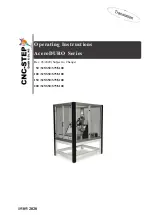
TD-W8900G
54M Wireless ADSL2+ Router User Guide
78
Chapter 6. Appendix
Appendix A: Glossary
Access Point -
A device that allows wireless-equipped computers and other devices to
communicate with a wired network. Also used to expand the range of a wireless network.
Ad-hoc Network -
An ad-hoc network is a group of computers, each with a wireless adapter,
connected as an independent IEEE 802.11 wireless LAN. Ad-hoc wireless computers operate on
a peer-to-peer basis, communicating directly with each other without the use of an access point.
Ad-hoc mode is also referred to as an Independent Basic Service Set (IBSS) or as peer-to-peer
mode, and is useful at a departmental scale or SOHO operation.
AES (A
dvanced
E
ncryption
S
tandard
) -
A security method that uses symmetric 128-bit block data
encryption.
ATM (A
synchronous
T
ransfer
M
ode
) -
ATM is a cell based transfer mode that requires variable
length user information to be segmented and reassembled to/from short, fixed length cells. It uses
two different methods for carrying connectionless network interconnect traffic, routed and bridged
Protocol Data Units (PDUs), over an ATM network.
Bridging -
A device that connects different networks.
Browser -
An application program that provides a way to look at and interact with all the
information on the World Wide Web.
DDNS
(
D
ynamic
D
omain
N
ame
S
ystem)
-
Allows the hosting of a website, FTP server, or e-mail
server with a fixed domain name (e.g., www.xyz.com) and a dynamic IP address.
Default Gateway -
A device that forwards Internet traffic from your local area network.
DHCP -
A networking protocol that allows administrators to assign temporary IP addresses to
network computers by “leasing” an IP address to a user for a limited amount of time, instead of
assigning permanent IP addresses.
DMZ
(
D
e
m
ilitarized
Z
one)
-
Removes the Router's firewall protection from one PC, allowing it to
be “seen” from the Internet.
DNS
(
D
omain
N
ame
S
erver)
-
The IP address of your ISP's server, which translates the names of
websites into IP addresses.
Domain -
A specific name for a network of computers.
DSL
(
D
igital
S
ubscriber
L
ine)
-
An always-on broadband connection over traditional phone lines.
Dynamic IP Address -
A temporary IP address assigned by a DHCP server.
EAP (E
xtensible
A
uthentication
P
rotocol
) -
A general authentication protocol used to control
network access. Many specific authentication methods work within this framework.
Encryption -
Encoding data transmitted in a network.





































